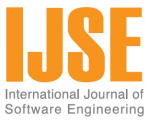Vol 3 No.1
Papers
ABSTRACT Software metric and estimation is base on measuring of software attributes which are typically related to the product, the process and the resources of software development. One of the greatest challenges for software developers is predicting the development effort for a software system based on some metrics for the last decades. Project managers are required to the ability to give a good estimation on software development effort. Most of the traditional techniques such as function points, regression models, COCOMO, etc, require a long-term estimation process. One of the new approaches that called soft computing techniques may offer an alternative for this challenge. This paper described an enhanced soft computing model for the estimation of software cost and time estimation. Result shows that the value of MMRE (Mean of Magnitude of Relative Error) applying soft computing was substantially lower than MMRE applying by algorithmic models.
ABSTRACT This paper addresses the issue of user-centric quality assessments of webbased systems, and proposes an assessment model for quality evaluations by focusing on metrics based on the perspective of end-users. The model includes an approach which scales quantifiable values of quality attributes based on importance of users’ perception. The assessment model is applicable to subjective quality attributes whereas the scaling technique can be ported to a range of assessment models. Because the model is based on subjective metrics, it should be used in conjunction with objective models, particularly those which return quantifiable values for quality ratings. The approach is flexible enough for end-users to tune the model according to their requirements. The web designer can also use this approach to assess the users’ related quality attributes of the system.
ABSTRACT Value-Based Software Engineering (VBSE) becomes one of the most promising approaches for software product management [10]. It focuses on the critical role by which stakeholders and business core values affect decision making which in turn influence the product success. This paper illustrates the Criteria-Based approach for software product management through a computer based software framework. The framework can select the best candidate requirements for each release based on the stakeholders’ input values for multiple criteria associated with each requirement. These criteria reflect the priority of each requirement not only in terms of perceived importance to the stakeholder and anticipated implementation cost criteria [18] but also through technical risk, relative impact and market-related aspects criteria. The framework has the capability to balance between the different stakeholders’ preferences based on the stakeholder’s weight provided by the product manager [35]. By this means the introduced framework will enable the product manager to overcome many challenges throughout the product life cycle by providing him with the different features that make the decision making process much easier and finally yields to product success [16].
ABSTRACT The increasing use of information systems led to dramatically improve the functionality with respect to safety, cost and reliability. However, with this growth of information systems the likelihood of vulnerabilities also increases. Security problems involving computers and software are frequent, widespread, and serious. The number and variety of attacks from outside organizations, particularly via the Internet, and the amount and consequences of insider attacks are increasing rapidly. We routinely hear customers claim that their system is insecure. However, without knowing what assumptions they make, it is hard to justify such a claim, and it is important to identify security requirements of the system. Enumerating the security to a system helps system architects develop realistic and meaningful secure software. In this paper, we propose a checklist for security requirements and assess the security with the help of a metrics based on checklist threshold value.
ABSTRACT This paper is concerned with constructing software effort estimation model based on artificial neural networks. The model is designed accordingly to improve the performance of the network that suits to the COCOMO Model. It is proposed to use single layer feed forward neural network to accommodate the model and its parameters to estimate software development effort. The network is trained with back propagation learning algorithm and Resilient Back propagation algorithm (RPROP) by iteratively processing a set of training samples and comparing the network’s prediction with the actual effort. COCOMO dataset is used to train and to test the network and it was observed that proposed neural network model improves the estimation accuracy of the model. The test results from the trained neural network are compared with that of the COCOMO model. By comparing the results of these two models, it is proven that both models (SLANN with BP and SLANN with RPROP) works better than COCOMO and SLANN with RPROP is an optimal neural network model for software effort estimation. SLANN with BP works well only for projects with small size, where as SLANN with RPROP works well for all kinds of projects as the convergence rate of RPROP algorithm is very high. The preliminary results obtained suggest that the proposed architecture can be replicated for accurately forecasting the software development effort.
ABSTRACT This research is concerned with the problem of software flexibility. Specifically, it addresses the problem of managing change in workflow management systems. A large change in business requirements naturally leads to a large change in the supporting software. However, a small change in business requirements may lead to a huge change in the supporting software. This is a result of software systems that are built with no consideration to flexibility. The suggested solution is based on separating activities from execution rules. Activities are implemented as a set of loosely coupled services. Services can be replaced when necessary. The execution sequence may be changed without the need to rewrite or reconstruct a given workflow. The work presented here is based upon ongoing research into software application flexibility which focuses on building flexible workflow engines.
